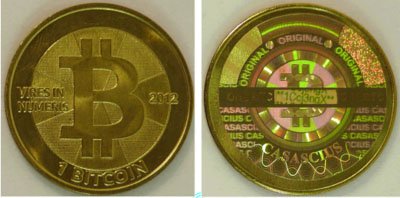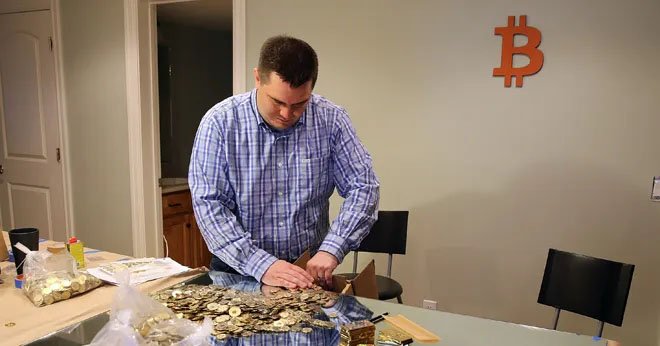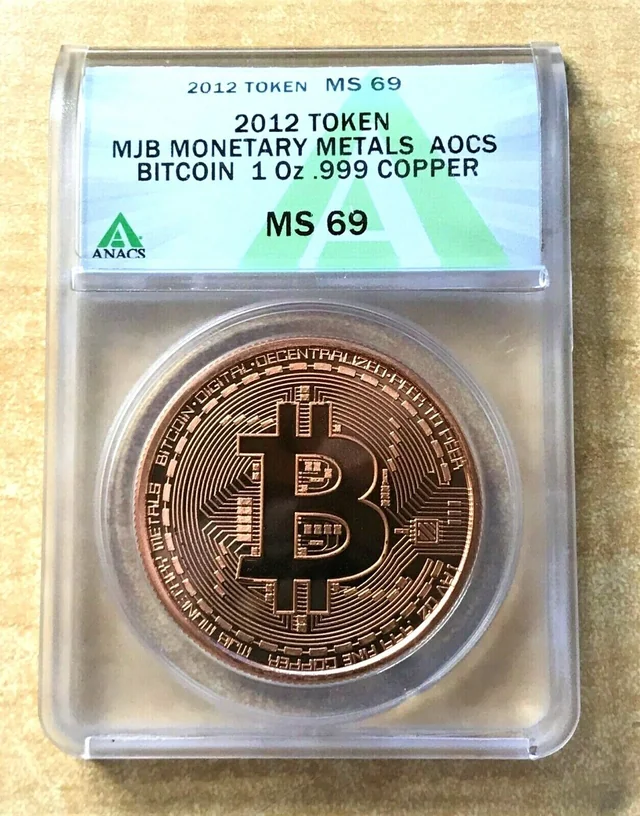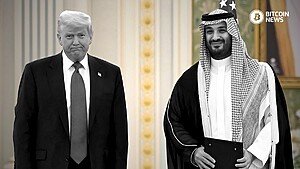Casascius Bitcoin physical coin emerged as a symbol of both innovation and artistry. However, their journey was not without challenges, sparking conversations about the intersection of art, technology, and finance.
Casascius’s Physical Bitcoin

Casascius physical Bitcoin(s) are among the most well-known and sought-after bitcoin physical coins. They were created by Mike Caldwell, who began producing them in 2011. Casascius coins gained popularity due to their innovative design and the fact that they were one of the earliest attempts to create a tangible representation of bitcoin.
One of the defining features of Casascius coins is the inclusion of an embedded private key beneath a tamper-evident holographic sticker. This private key is concealed to prevent unauthorized access to the bitcoin funds associated with the coin. Each Casascius coin contains a specific amount of bitcoin associated with its private key. To redeem the bitcoin, the owner must peel off or destroy the holographic sticker to reveal the private key.
Casascius coins resemble traditional coins, typically brass or other metals, with intricate designs on both sides. They often feature the Bitcoin logo, the denomination (e.g., 1 BTC), and a holographic sticker containing the public address of the associated Bitcoin wallet. Security features are incorporated into Casascius coins to prevent tampering or counterfeiting. These include holographic stickers, tamper-evident seals, and intricate designs that make replication difficult.
The value of Casascius coins can vary widely depending on factors such as the amount of bitcoin they hold, their condition, and their rarity. Some collectors are willing to pay significant premiums for rare or limited-edition Casascius coins.
Mike Caldwell And The Treasury Department

In 2013, the U.S. Financial Crimes Enforcement Network (FinCEN) issued guidance that caused a significant impact on the production of Bitcoin physical coins, including Casascius coins. The guidance suggested that individuals and businesses involved in the creation and distribution of “physical Bitcoin” might be subject to regulations governing money transmission services under U.S. law.
This guidance stemmed from FinCEN’s interpretation of the existing regulations, which aimed to prevent money laundering and illicit financial activities. FinCEN’s concern was that the anonymity associated with Bitcoin physical coins could facilitate illegal transactions and undermine the effectiveness of anti-money laundering efforts.
“Just before Thanksgiving, he says, he received a letter from the Financial Crimes Enforcement Network, or FINCEN, the arm of the Treasury Department that dictates how the nation’s anti-money-laundering and financial crime regulations are interpreted.”
– Source
Mike Caldwell, the creator of Casascius coins, took the FinCEN guidance seriously and decided to cease production of Bitcoin physical coins in 2013. This decision marked the end of an era for Casascius coins as new ones were no longer being minted.
The FinCEN guidance had broader implications beyond just Casascius coins. It sparked discussions within the Bitcoin community about the regulatory challenges facing physical representations of digital assets and the need for clarity in regulatory frameworks.
Most Popular Bitcoin Physical Coin Today
In the realm of Bitcoin physical coin design, Mike Bruce’s work for MJB Monetary Metals stands out for its technical precision and thematic depth. Bruce’s designs seamlessly integrate modern technology with artistic expression, resulting in visually striking physical Bitcoin that resonates with collectors and enthusiasts.

Bruce’s approach to designing Bitcoin physical coins for MJB Monetary Metals is marked by intricate details and symbolic imagery. He skillfully incorporates themes such as decentralization and transparency, reflecting the core principles of Bitcoin. Bruce’s distinctive aesthetic has become ubiquitous, influencing not only the physical Bitcoin market but also digital representations of Bitcoin and related merchandise.
They have inspired a multitude of imitations and adaptations, with other designers and manufacturers drawing inspiration from his thematic depth and meticulous craftsmanship. As a result, elements of Bruce’s style can be observed in numerous Bitcoin physical coins produced by different entities worldwide.
Beyond the realm of Bitcoin, Bruce’s designs have also found their way into popular culture and mainstream media. They have been featured in articles, documentaries, and news segments covering the rise of Bitcoin.

“It’s amazing that Mr. Bruce was the designer and first ever to use the now famous Bitcoin theme…
This Bitcoin copper art round has a circuit board theme, emphasizing the technological aspect of Bitcoin. The design originated from an artistic drawing and is referred to as an ‘Art Round’ by Mr. Bruce. The coin and its design have become an extremely popular ‘image’ for Bitcoin.”
– Source










